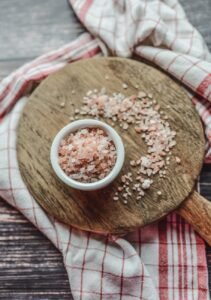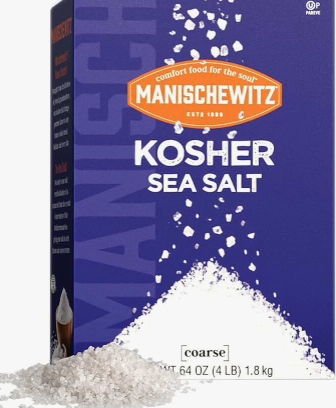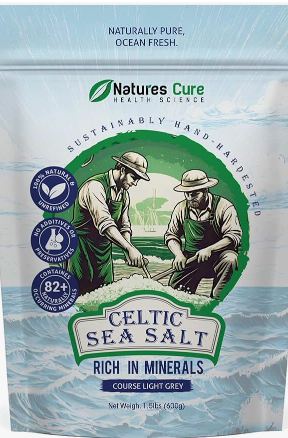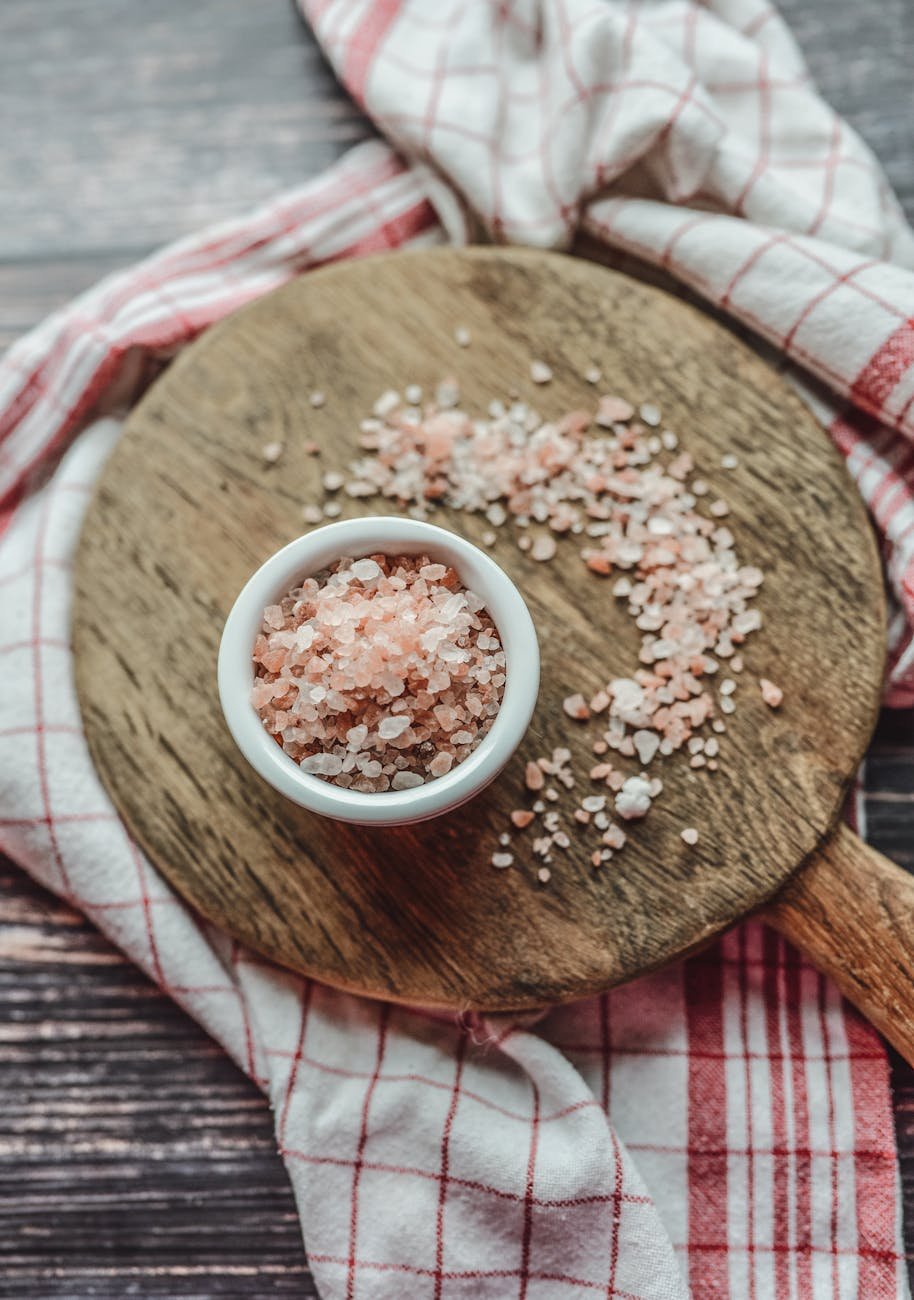By A. Geri

Nine Best Cooking Salts: A Guide to Choosing the Perfect Salt

Salt is one of the most essential ingredients in cooking, used to enhance and bring out the natural flavors of food. However, not all salts are created equal, and different types of salt can provide unique flavors, textures, and aesthetic appeal. From everyday table salt to exotic varieties from around the world, here’s a guide to some of the best salts to use in your cooking. This article will help you learn more about the varieties cooking salts and then will look at the healthier versions salts. We dont start thinking about this everyday essential for our lives product until the moment we learn a litlle bit more about it. Salt could change a lot the taste of a dish and could adding a lot more value than we can think of. Lets dive in:
- Table Salt
Best for: Everyday cooking, baking, and quick seasoning
Table salt is a finely granulated, refined salt that’s commonly iodized to prevent iodine deficiency. It’s highly versatile, easily dissolves in both hot and cold dishes, and is a staple in many recipes. The fine texture of table salt makes it ideal for baking, as it evenly distributes throughout batters and doughs, ensuring consistent seasoning.
Pros: Inexpensive, accessible, good for baking
Cons: Lacks the nuanced flavors of specialty salts 
- Kosher Salt
Best for: General cooking, seasoning meats, and sprinkling over savory dishes
Kosher salt is known for its large, flaky crystals that make it easy to pinch and sprinkle. It’s less dense than table salt, meaning it’s less likely to over-salt a dish. Kosher salt is commonly used by professional chefs for its clean taste and ease of handling, making it perfect for seasoning meat before roasting or grilling.
Pros: Mild flavor, easy to control in pinches, versatile
Cons: Requires more volume than table salt for the same level of saltiness - Sea Salt
Best for: Finishing dishes, adding texture, and light seasoning
Sea salt is harvested from evaporated seawater, often retaining trace minerals that can give it a unique flavor profile depending on its origin. Available in fine and coarse varieties, it has a subtle briny taste that complements salads, roasted vegetables, and delicate dishes. Its coarser grains also make it an attractive choice for finishing a dish with a satisfying crunch.
Pros: Rich in trace minerals, adds texture, mild and fresh flavor
Cons: Can be more expensive, may contain environmental impurities - Fleur de Sel.Fleur de Sel – Premium Sea salt from Guerande France – Flaky Sea Salt from the Celtic Sea is one of my choices
Best for: Finishing delicate dishes, desserts, and gourmet presentations
Fleur de Sel, meaning “flower of salt,” is a rare and expensive salt harvested from seawater, typically in France. It forms delicate crystals that are hand-skimmed from the surface of salt marshes. This salt is prized for its light, flaky texture and slightly sweet taste. Fleur de Sel adds an elegant touch to both savory and sweet dishes, such as roasted meats, salads, chocolates, and caramels.
Pros: Delicate, subtle, and slightly sweet; perfect for finishing
Cons: Expensive, doesn’t dissolve easily, not ideal for cooking - Himalayan Pink Salt
Best for: Finishing meats, salads, grilled dishes, and aesthetic presentations
This pink salt, sourced primarily from the Khewra Salt Mine in Pakistan, gets its distinct color from trace minerals, such as magnesium and iron. Known for its mild and earthy flavor, Himalayan salt is popular as a finishing salt on steaks, vegetables, and even in salt blocks used for cooking and serving. It’s also praised for its mineral content and visually appealing color.
Pros: Mild flavor, attractive color, can be used as a serving plate when in block form
Cons: Higher cost, limited in flavor enhancement compared to more assertive salts - Maldon Salt
Best for: Finishing meats, fish, vegetables, and even cocktails
Maldon salt is a flaky sea salt that originates from the coastal town of Maldon in England. The large, pyramid-shaped crystals have a crunchy texture that enhances the mouthfeel of dishes. This salt is a favorite among chefs and home cooks for finishing dishes like grilled meats, roasted vegetables, and even margaritas. Maldon sea salt Salt Flakes is Unique Pyramid Shaped Salt Flakes, perfect for a wide range of dishes, hand-harvested for four generations.
Pros: Beautiful flake shape, satisfying crunch, excellent as a finishing salt
Cons: Expensive, not ideal for baking or dissolving in sauces - Black Salt (Kala Namak)
Best for: Indian cuisine, vegan dishes, and adding an egg-like flavor
Black salt, or Kala Namak, is a volcanic salt with a unique sulfurous taste, often used in Indian cuisine. Its flavor profile makes it popular in vegan cooking as a substitute for egg flavor. Black salt is great for seasoning salads, chutneys, and savory Indian snacks like chaats.
Pros: Unique eggy taste, good for vegan recipes
Cons: Strong sulfurous smell, limited to specific dishes - Smoked Salt
Best for: Grilled meats, fish, and adding smoky flavor to any dish
Smoked salt is sea salt that’s been smoked over wood, imparting a deep, smoky flavor. It’s a great way to add a smoky taste to meats and vegetables without using a grill or smoker. Different woods like hickory, apple, and mesquite contribute varied smoky notes, making this salt ideal for hearty dishes or where a hint of smoke is desired.
Pros: Adds smoky flavor, versatile in meats and vegetarian dishes
Cons: Strong flavor that can overpower delicate dishes if used excessively - Celtic Sea Salt
Best for: Seasoning vegetables, meats, and enhancing mineral content in dishes
Celtic sea salt is harvested from the coast of Brittany, France, and is known for its grey color, which results from the clay lining of the salt flats where it’s harvested. This salt is moist and coarse, with a slightly briny flavor that enhances many dishes, especially meats and vegetables.
Pros: High in minerals, slightly moist and coarse, adds complex flavor
Cons: Moist texture can be harder to pinch, requires a grinder for finer use - Choosing the Right Salt for Your Cooking Needs
Each type of salt offers unique textures, flavors, and aesthetic qualities, so the best salt for cooking depends on the specific needs of your dish. Here’s a quick summary:
For everyday cooking: Table salt or kosher salt
For finishing: Maldon, fleur de sel, or sea salt
For specific cuisines: Black salt (Indian), smoked salt (BBQ), or Celtic sea salt (European)
For visual appeal and mild flavor: Himalayan pink salt
Using the right salt can elevate a dish from ordinary to exceptional, highlighting flavors in ways you might not expect. Try experimenting with these different salts to see which best suits your culinary style!
When it comes to choosing the healthiest salt, the focus is not just on flavor, but also on mineral content, processing methods, and the impact on our bodies. While all salts are primarily composed of sodium chloride, some types offer additional minerals that contribute to overall health. Here’s a look at the healthiest salt varieties, their benefits, and what makes them stand out.
- Himalayan Pink Salt
Health Benefits: High mineral content, lower sodium density
Himalayan pink salt is often praised as one of the healthier salt options due to its rich mineral profile. In addition to sodium chloride, it contains trace amounts of magnesium, calcium, and potassium, which contribute to its pink color. These minerals, while present in small quantities, can support electrolyte balance, bone health, and even skin health. Additionally, Himalayan pink salt has a lower sodium density than table salt, meaning you may end up consuming slightly less sodium overall, which can be beneficial for blood pressure management.
Why It’s Healthy: Contains over 80 trace minerals, supports electrolyte balance, lower sodium density than refined salts - Celtic Sea Salt
Health Benefits: Contains essential minerals, naturally lower in sodium, less processed
Celtic sea salt, harvested from coastal regions in France, is unrefined and rich in trace minerals like magnesium and calcium. It’s also naturally moist and grey due to the clay-rich salt flats, which contribute additional minerals. Celtic sea salt’s high moisture content helps it retain its nutrients and makes it more alkaline, which can help balance the body’s pH levels. The lower sodium concentration in Celtic sea salt compared to table salt can be a healthier option, especially for those watching their sodium intake.
Why It’s Healthy: High in essential minerals, alkalizing properties, less refined than other salts - Sea Salt
Health Benefits: Minimal processing, includes trace minerals
Sea salt, especially if harvested from clean waters, can be a healthier option compared to highly refined table salt. It contains natural trace minerals like potassium, iron, and zinc, which contribute to various bodily functions. The coarse texture of sea salt also means it’s typically used as a finishing salt, which encourages lighter seasoning, potentially leading to lower sodium intake.
Why It’s Healthy: Natural mineral content, typically requires less use due to coarser texture - Black Salt (Kala Namak)
Health Benefits: Contains iron, helps balance sodium levels
Black salt, or Kala Namak, is often used in Indian and South Asian cuisine and is known for its unique sulfurous flavor. It’s less refined than table salt and contains small amounts of iron and other trace minerals. Black salt’s lower sodium content may be beneficial for those with high blood pressure. Additionally, the sulfur compounds in black salt, though responsible for its eggy smell, may support digestive health.
Why It’s Healthy: Lower sodium content, trace minerals, may aid digestion - Kosher Salt (Natural)
Health Benefits: Lower risk of added chemicals, coarser grains encourage lighter seasoning
Kosher salt is minimally processed and typically doesn’t contain the anti-caking agents or additives that are common in table salt. While it doesn’t contain many trace minerals, its coarser grains encourage a lighter hand in seasoning, which can lead to less overall sodium intake. Natural kosher salts, without additives, are healthier than highly refined versions and are a great option for everyday cooking.
Why It’s Healthy: Minimal processing, no additives, encourages less sodium intake
A Note on Table Salt: Less Healthy Due to Additives
Table salt is often fortified with iodine, which is essential for thyroid health, especially in areas where iodine deficiency is common. However, it’s also typically stripped of trace minerals during the refining process and may contain anti-caking agents and additives to improve shelf stability and pourability. While iodized salt has its health benefits, those who consume a balanced diet with seafood and dairy often get sufficient iodine from their food, making natural salts a better choice for general use.
Which Salt Should You Choose for Health?The healthiest salt depends on your dietary needs and goals:
- For Mineral Content: Himalayan pink salt and Celtic sea salt are excellent sources of trace minerals, which can support various bodily functions.
- For Low-Sodium Options: Black salt and Celtic sea salt are naturally lower in sodium than refined table salt, making them better for heart health.
- For Minimal Processing: Natural sea salt and kosher salt are generally free from additives, making them cleaner choices.
Switching from refined table salt to a natural salt with higher mineral content and minimal processing can make a subtle yet beneficial difference to your health. Just remember that all salts should be consumed in moderation to maintain a balanced sodium intake. If you liked the content of this topic and wish to continue reading my blog you can leave below your email address and/or comment and I will send you a message each time I write a new blog post.

